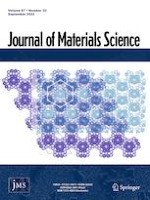22.08.2022 | Energy materials
Determining the effect of burn-in process on reliability of X7R multilayer ceramic capacitors
Erschienen in: Journal of Materials Science | Ausgabe 33/2022
EinloggenAktivieren Sie unsere intelligente Suche, um passende Fachinhalte oder Patente zu finden.
Wählen Sie Textabschnitte aus um mit Künstlicher Intelligenz passenden Patente zu finden. powered by
Markieren Sie Textabschnitte, um KI-gestützt weitere passende Inhalte zu finden. powered by
